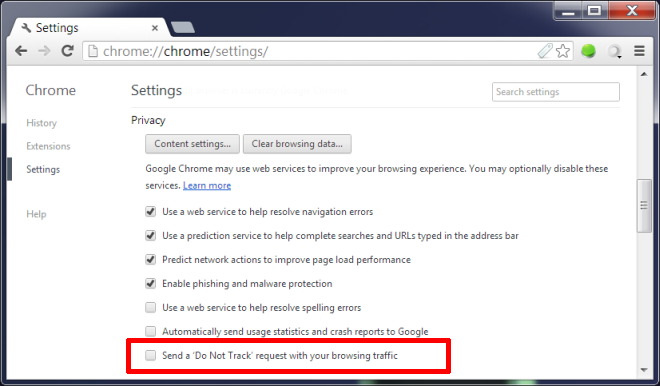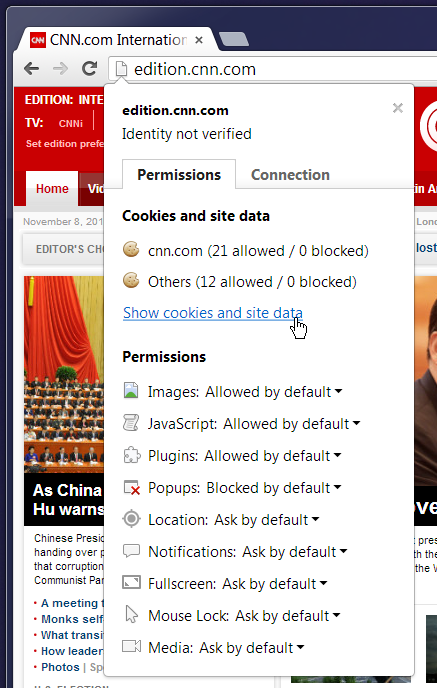Better Late Than Never; Chrome 23 Adds Do Not Track Feature
The next version of Chrome, Chrome 23, was released to the Stable channel yesterday and it seems Chrome has finally caught up with Internet Explorer, Firefox, Opera, and Safari, and implemented the Do Not Track feature. Do Not Track prevents websites from tracking your activity for feedback or other purposes. It stops analytics services and ad networks from collecting information on which website you’ve navigated to or how you landed on a particular page. This feature was first introduced in Internet Explorer 9 and since then, all other popular browsers have adopted this system. Before, it was down to services themselves or to browser extensions/add-ons to add this feature and it wasn’t 100% effective in any case. In addition to the Do Not Track feature, Chrome has also changed where you manage website permissions and moved it to the URL bar.
To get Do Not Track, you will first need to update Chrome, of course, by heading to About Google Chrome from the customization menu. Open The Settings page, and under the Settings tab, click Show Advanced Settings. You will find a new option Send a ‘Do Not Track’ request with your browsing traffic. Enable it.
Chrome will then show a pop-up that gives you a brief overview of how the Do Not Track feature works and where it may fall short, i.e., some websites will comply with the request and others won’t. Remember, there is no compulsion for a website to respect this request.

To manage permissions for a website in Chrome 23, click the SSL icon in the URL bar, or the site information icon (depends on what you see there when you open a website) and you will see a menu with options for managing cookies and a tab to view connection information. Besides cookies, you can also manage plugins and what type of permissions that particular website has, i.e., accessing your location, sending notifications, etc.

Besides these two noticeable changes, Google says Chrome 23 will now consume less battery power, and you should see a noticeable difference even when watching videos. The new version has also plugged quite a few security bugs, and according to the details released by Google itself, the company’s paid a total of $9000 in bug bounty.
Do Not Track, as a browser feature, faced some criticism when it was first introduced by Internet Explorer because advertising companies felt it should be opt-in rather than opt-out. Chrome has kept it as an opt-in option, which is understandable, since Google.com itself does not alter its behavior when a browser sends a Do Not Track request.
